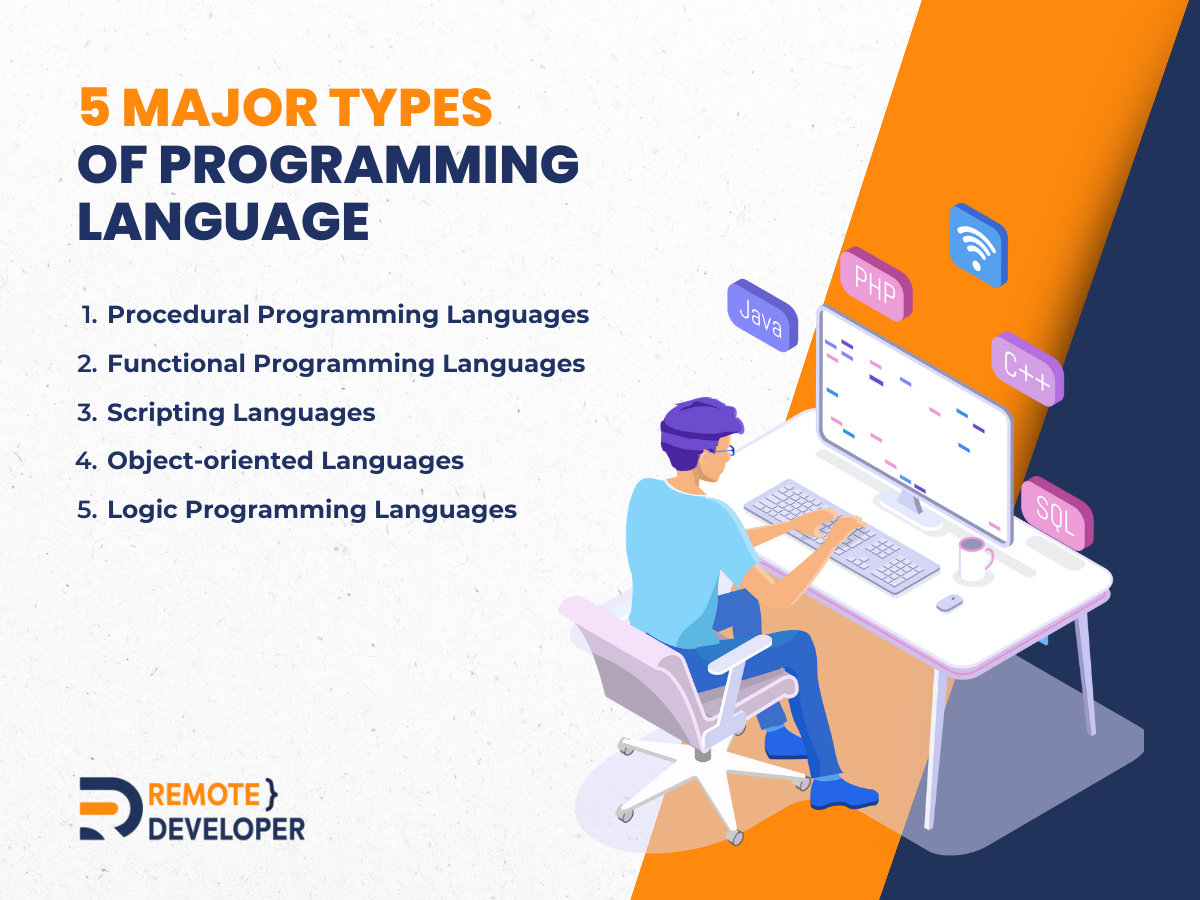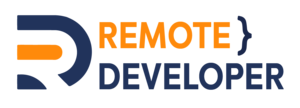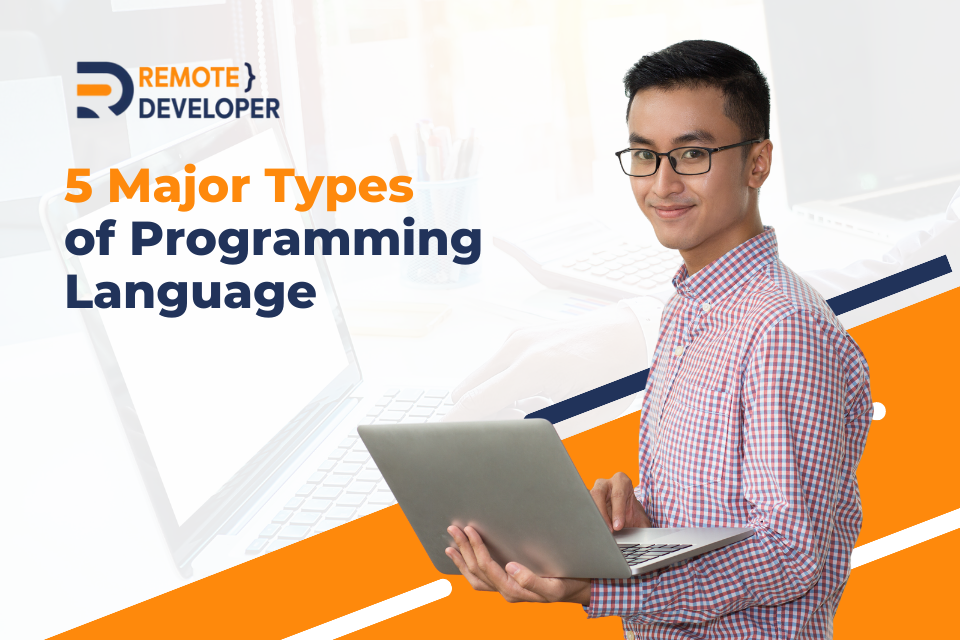Today, programming is probably one of the most sought developer skills in the industry. Having at least the fundamentals of development and programming will surely help your career. As a programmer, you need to know at least data architecture, design, and, most of all, programming languages.
But what language should you learn? There are hundreds of programming languages out there. And deciding where to specialise can be daunting, especially for new programmers. So, to help you with that, we will explore five different types of programming languages and examples of each in this article.
What is a programming language?
Programming languages are powerful tools for creating applications and software solutions. It is the primary tool software developers, and programmers use to develop applications, websites, systems, and other digital products.
Moreover, it is used to provide instructions to computers so that they can perform tasks efficiently. Languages are also used to create algorithms and data structures that help solve complex problems. They can also automate tasks, such as data analysis or machine learning.
By understanding the basics of programming languages, anyone can develop simple programs or scripts for their needs.
5 Major Types of Programming Languages
Nowadays, the world has thousands of programming languages. Each day, new languages are introduced and industry. As such, it’s crucial to categorise and understand each and how they can help you in your career.
Here are five main types of programming languages.

1. Procedural Programming
Procedural programming is one of the major types of programming languages that allows developers to write code that can be executed step-by-step. They are usually used to create programs and applications that follow specific instructions.
These programming languages have simple syntax but powerful features. With the help of procedural programming languages, developers can easily create complex systems. Likewise, it can be used for various tasks, including game development, web design, data analysis, operating systems, etc.
Examples of procedural programming languages include C, C++, Java, and Perl.
2. Functional Programming Languages
Functional programming is a type of programming language that lets developers write code declaratively. Developers can express the desired result of the program without explicitly specifying the steps required to achieve it. This method makes code easier to read, understand, and maintain. Likewise, it makes it easier for developers to create complex applications with fewer codes.
Functional programming languages are becoming increasingly popular due to their ability to improve code quality and reduce development time. They are used in many industries, including web development, mobile app development, and machine learning.
Examples of functional programming languages include Haskell, Lisp, Scheme, OCaml, and Erlang.
3. Scripting Languages
A scripting language is another type of programming language that is used to create scripts for software applications. It is designed to make codes easy to use and understand and can be used by experienced and novice programmers.
Scripting languages are typically used to automate tasks, create user interfaces, and develop web applications. Likewise, they are also often used in game development, data analysis, and system administration.
Examples of scripting languages include JavaScript, Python, Ruby, PHP, and Perl. Each language has unique features that make it ideal for specific use cases. For example, JavaScript is great for client-side scripting. At the same time, Python is often used for server-side or data analysis tasks. Moreover, each language has a wide range of libraries and frameworks that can be used to extend its capabilities even further.
4. Object-oriented Programming Languages
Object-oriented language is one of the main types of programming languages that focuses on n the concept of objects and their interaction with each other rather than actions and data. This type of language allows developers to create complex programs by manipulating objects and their associated data. Likewise, it will enable easy code-sharing between different applications and platforms, making it an ideal choice for many projects.
Object-oriented languages are used in many various applications, ranging from multiple applications. This includes web development, mobile development, game development, artificial intelligence (AI), machine learning (ML), natural language processing (NLP), and more. They offer features like encapsulating data members and methods within classes, inheritance for code reuse, and more.
5. Logic Programming Languages
Logic programming language is a computer programming language that uses formal logic to express facts and rules. It is based on declaring regulations and points about a problem and then using those facts and practices to make inferences about it.
This type of language is often used in artificial intelligence applications, such as natural language processing, machine learning, robotics, and expert systems. Logic programming languages are also used in traditional applications such as database management systems.
Examples of logic programming languages include Prolog, Datalog, and Answer Set Programming (ASP).
Other Ways to Categorise Programming Languages
Beyond the five above-mentioned categories, here are other ways to categorise programming languages in computer science.
1. Front End vs Back End Programming languages
In development, you will often hear both front-end and back-end development. The main difference between these two is that front-end programming mainly concerns a website or software’s ‘user’ aspect. It focuses on the visual elements the users will interact with, including buttons, images, colour, text, etc.
Some examples of front-end programming languages are as follows:
- Hypertext Markup Language (HTML)
- Cascading Style Sheets (CSS)
- React
- jQuery
- Swift
- JavaScript
On the other hand, back-end development focuses on the server side of the website or an application. This is the part that users do not interact with but supports their overall experience. It includes database, architecture, scripting, communication, and more aspects.
Here are some examples of back-end programming languages:
- Python
- Ruby
- Java
- PHP
- C#
2. Low-Level Vs High Level
Another way to categorise programming languages is high-level vs low-level programming. The main difference between the two is that high-level is a user-oriented programming language. This type of language enables developers to create a user-friendly program that humans can understand.
The best example of high-level programming languages is as follows:
- Java
- Perl
- Python
- Ruby
- COBOL
On the other hand, low-level programming languages focus more on machines. It is usually highly efficient in instructing machines that the machine operations must perform or carry out a task.
Examples of low-level languages are:
- Assembly language
- Machine code
Learn more about programming languages at Remote Developer!
In summary, these programming languages are just a tiny fraction of different programming languages. If you want to get into coding or programming, there are many available resources online where you can learn. And when you are ready to start your career, Remote Developer can help you. Join us and work for one of the best IT companies in Australia. Contact us and send your resume today!

